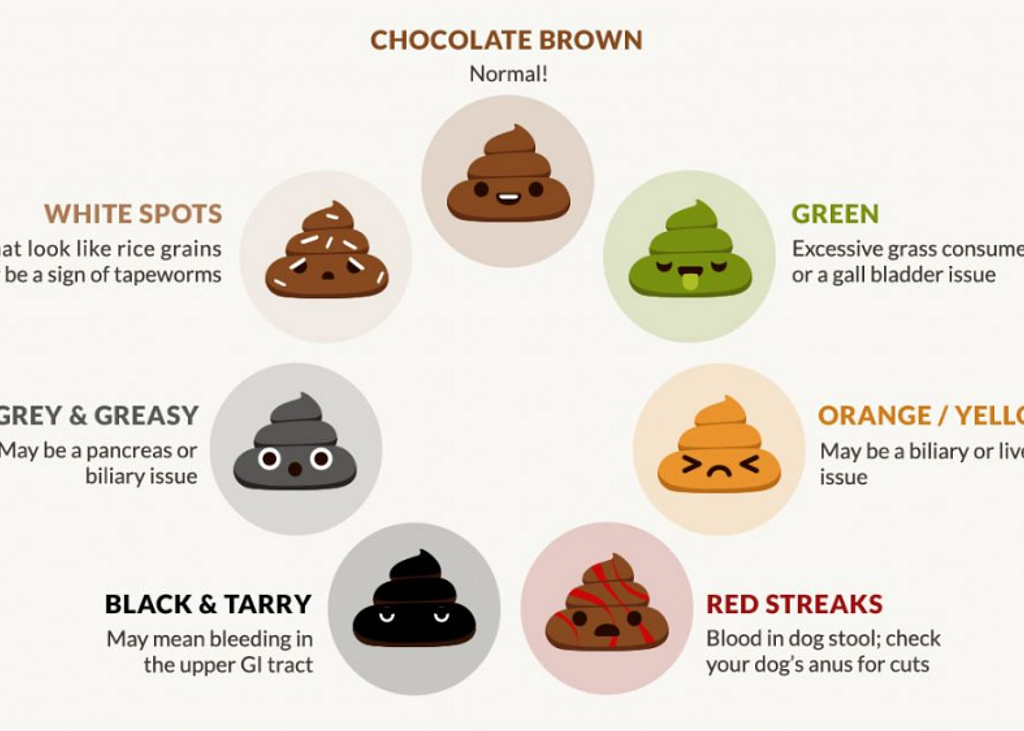Dog Diarrhea: Causes, Colours, and Care
Every dog owner knows that dogs occasionally experience tummy troubles. One common gastrointestinal issue is diarrhea. While it's often not a cause for immediate alarm, it's essential for dog parents to understand why it happens, what might be causing it, how to assess the colour of diarrhea, what steps to take to help their furry baby, and when it's time to seek veterinary help.
My sister messaged me that their cute doggo had some diarrhea that started that morning, so I was inspired to create this blog with all the information to help you navigate dog diarrhea.
Why Does Dog Diarrhea Happen?
Diarrhea in dogs can occur for various reasons:
- Dietary Changes: Abrupt changes in your dog's diet can upset their stomach. Introduce new foods gradually.
- Food Allergies or Intolerances: Some dogs may have allergies or sensitivities to certain ingredients in their food. In Lambo's case, he has an allergy or intolerance to chicken, so if he has something with chicken, he gets yellow diarrhea.
- Ingesting Inedible Objects or Poisonous Substances (like plants): Dogs are known for eating things they shouldn't, such as garbage, toys, or plants, which can irritate their digestive system.
- Bacterial or Viral Infections: Pathogens like bacteria or viruses can cause gastrointestinal distress. Parvovirus is a well-known example.
- Stress or Anxiety: Dogs can develop diarrhea due to stress, anxiety, or changes in their routine.
- Parasites: Intestinal parasites, such as worms or giardia, can lead to diarrhea.
- Illnesses: Such as kidney and liver disease, colitis, inflammatory bowel disease and cancer.
- Antibiotics and other medications

Assessing the Color of Diarrhea
The colour of your dog's diarrhea can provide insights into the underlying cause:
- Brown: This is usually normal and may indicate just a minor dietary upset.
- Green: This could be a sign of grass consumption, new supplements with green pigment (increased chlorophyll)or gallbladder issues.
- Yellow: Food is moving quickly through the digestive system; a minor dietary upset but could also indicate liver issues.
- Black or Tarry: This might indicate bleeding in the upper gastrointestinal tract, which requires immediate veterinary attention.
- Red Blood: Fresh blood in diarrhea may suggest colitis or other serious issues, but also check your dog's anus for cuts. Contact your vet.
- Gray & Greasy: This can indicate pancreas or liver problems and warrants a veterinary visit.
- Orange: Biliary or liver problems.

What to Do to Help Your Dog
- Withhold Food: For the first 12-24 hours, it's usually best to withhold food to allow your dog's stomach to settle. Ensure they have access to fresh water at all times to prevent dehydration. You can encourage more hydration by offering bone broth or making a dog safe tea like using fresh ginger or parsley and steeping it, then letting it cool before offering it to your dog.
- Gradual Reintroduction: After the fasting period, reintroduce bland, easily digestible foods like boiled rice and chicken in small portions. Pumpkin puree is another good option or add on.
- Probiotics: Consider adding a canine-specific probiotic to help restore the balance of beneficial gut bacteria.
- Monitor: Keep an eye on your dog's condition. If diarrhea persists for more than 24-48 hours, worsens, or is accompanied by other concerning symptoms like vomiting or lethargy, contact your vet as soon as possible.
Foods to offer
-
Rice Water:
- Boil brown or white rice in a generous amount of water.
- Strain out the rice grains.
- Offer your dog the cooled, creamy white, starchy broth that remains.
- Consider adding a splash of unsalted chicken broth to enhance its appeal.
-
Pumpkin:
- Whether you have canned 100% pumpkin puree on your pantry shelf or a specialized canned pumpkin for dogs, these options are uniquely effective for both diarrhea and constipation.
- ***Always check the label to ensure it's 100% pumpkin and not "pumpkin pie filling."
- Plain Yogurt with Active Cultures: For dogs that can tolerate dairy. Ensure there are no flavours or additives!
- Probiotics: These supplements promote the presence of beneficial live bacteria that aid digestion, similar to what's found in yogurt. Ensure you get dog-specific probiotics!
- Boiled Potatoes (without skin), and sweet potatoes are fine as well.
- Plain, Low-Sodium, Low-Fat Cottage Cheese is another option for dogs that tolerate dairy.
-
Plain Protein Sources:
- Eggs (cooked without butter or oil).
- Chicken (skinless).
- Herbs: Such as fennel, which may possess soothing properties for the gastrointestinal tract.
-
Specially-Formulated Dog Foods:
- Some pet food manufacturers offer specialized products designed for dogs with sensitive stomachs. Speak with your vet for their recommendations.

Remember that what works to alleviate one dog's diarrhea may not have the same effect on another, so a bit of trial and error may be necessary to find the right approach. It can also be helpful to maintain a record of what remedies are effective in stopping your dog's diarrhea and what doesn't work so you're better prepared if the issue arises again.
When to See a Vet
Certain situations require immediate veterinary attention:
- Bloody or Black Diarrhea: These indicate potentially serious issues and should never be ignored.
- Vomiting and Diarrhea Together: Simultaneous vomiting and diarrhea can quickly lead to dehydration.
- Lethargy or Weakness: If your dog becomes weak or lethargic, it's a sign of distress.
- Loss of Appetite: Refusal to eat for more than a day is concerning.
- Chronic Diarrhea: If diarrhea persists for over a couple of days or frequently recurs, it may indicate an underlying problem.

While diarrhea in dogs is common and often not a cause for panic, it's vital to monitor your dog's symptoms and take appropriate steps to ensure their well-being. By understanding the potential causes, assessing the colour of the diarrhea, and knowing when to seek veterinary care, you can help your furry baby return to its healthy, happy self.


.png)

